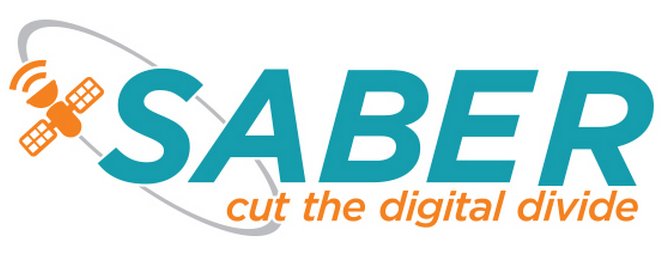Today’s podcast is an interview with Patrick Sullivan, an economic development consultant who has worked on broadband strategy in Wales and Ireland. He’s part of a partnership of organisations behind Project SABER (SAtellite Broadband for European Regions), which is making the case for satellite broadband as part of the solution to reducing the digital divide.
Click on the player above to hear the podcast, or download it here: 24:58; 14MB; MP3.
There’s a perception that satellite broadband is slow and expensive, says Patrick, but typically that doesn’t take into account the way the technology has developed in the past 10 years. Speeds of up to 20 Mbps can be achieved now, and the cost is comparable to wireless solutions.
Latency may be a problem for some specialised applications, but he says that for most practical purposes – including Voice Over IP applications such as Skype – it’s not an issue.
The real issue, especially in isolated areas, is the businesses and homes which cannot access internet by any other means. Satellite should be recognised as a viable solution in these areas.
“Significant technological advancements have been made in satellite technology which has resulted in this being a reliable medium for the delivery of broadband services. Businesses in rural and remote areas can therefore now gain access to broadband services through satellite technology.”
One option, says Patrick, is to use satellite as backhaul for a local wireless distribution system.
On Tuesday, Project SABER met in Brussels to launch a Satellite Broadband Voucher Scheme which it said should be implemented by the members of the EU and their regional governments to encourage awareness and take-up of satellite broadband solutions across Europe’s most rural regions.
The meeting brought together representatives from 21 European regional authorities, satellite experts and key influencers, including Eutelsat, SES Broadband Services, Airbus Defence and Space, to examine how to accelerate broadband adoption in rural areas.
The SABER project has developed guidance, in particular targeted at Regional Policy makers, to make them aware that Satellite technology is available to deliver broadband services. The guidance, written by Patrick’s company, Slí Nua Development, and Eutelsat, and which has been reviewed by 17 regions from across Europe, has focussed on the selection of appropriate technologies and deployment models; building the business case for investing in broadband support programmes; exploring funding options; dealing with state aid; and procuring satellite solutions.
The 24-month SABER project is partially EU-funded and involves 26 partners, 21 regional authorities and ICT public and private organisations supporting regions in broadband deployment representing 13 countries.
Those interested in satellite broadband should visit broadbandforall.eu to compare the products and services offered by different providers. Patrick says that rural businesses in Ireland might be able to use the Local Enterprise Digital Voucher Scheme to help fund the cost of satellite service installation.

![Satellite Broadband can Cut the Digital Divide [Audio] saberf](https://technology.ie/wp-content/uploads/2014/10/saberf.jpg)







Very 1-sided interview with someone with a vested interest, so take it with a healthy serving of salt!
The problems with satellite mentioned (latency, install cost, monthly cost, and poor standard of service) all still exist, despite the best efforts of marketing. Yes newer technology (Ka band, etc.) helps a small bit, but the underlying problems still exist. They are having to send very limited bandwidth so far up in the sky means it’s hard to share, and expensive to do so, and will always be slow to do so.
Skype being “fine” is subjective, but there’s no way I’d recommend any one in business to use it to communicate with customers. Yes it may work, but there are significant, noticeable delays (because of the laws of physics!) that lead to a very poor experience. Obviously more critical
real-time applications are just not usable at all (gaming, financial, some betting, etc.).
Fundamentally, though, it’s a very inefficient and, thus, costly means of distributing a finite amount o bandwidth. That’s why the caps are so low (lower than any “lite” broadband offering, but at more than twice the price). That’s why the monthly costs are high (highest per-megabit pricing in the industry). It’s also subject to massive contention. The numbers just don’t add up. With a total bandwidth to be shared with many thousands of pan-European users comparable to a small rural DSL exchange, there’s always going to be contention management problems. Always.
Satellite, at best, can only ever be a short-term stop-gap measure in bridging the digital divide. There’s a balance of when it makes sense to invest in the short term solution, versus investing in the longer term solution (fibre: FTTP/FTTC). We’re close, if not past, the time where it makes more sense to give up on investing satellite (which still plays a vital role in some areas).
(Disclosure: I have no vested interest in any broadband technology, product, or operator!)